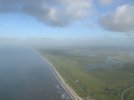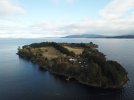Hi al,
So happy to be member of this great forum. I live in Western Australlia, and we have some great, uninhabited islands on our rugged coastline. Where I live there are 3 islands that are 2-3 km from the beach. I am so tempted to fly from the beach, where I will always have a direct connection to my drone without interference or buildings in the middle to fly my drone (Mavic Air 2, regular controller with Iphone) to these islands have a quick look and return. I have a few questions, as the typical anxiety kicks in here, and not sure if my DJI replacement insurance would cover it if I ditch my drone.
There are no restrictions on flying in that area.
1. Is there a risk I will still lose drone contact even if it says you can go 10 km distance ?
2. How high should I fly in order not to ditch the drone, I know the altitude warning is not enough when flying over water and then there are waves.
3. can I rely on my RTH if the battery empties, will it be able to make it home to the beach ? Any shortcoming here means loss by ditching.
4. Would you recommend flying there in sports mode to be quicker or would that drain my battery even quicker ?
Thanks so much for your answers, can't wait to do this.
So happy to be member of this great forum. I live in Western Australlia, and we have some great, uninhabited islands on our rugged coastline. Where I live there are 3 islands that are 2-3 km from the beach. I am so tempted to fly from the beach, where I will always have a direct connection to my drone without interference or buildings in the middle to fly my drone (Mavic Air 2, regular controller with Iphone) to these islands have a quick look and return. I have a few questions, as the typical anxiety kicks in here, and not sure if my DJI replacement insurance would cover it if I ditch my drone.
There are no restrictions on flying in that area.
1. Is there a risk I will still lose drone contact even if it says you can go 10 km distance ?
2. How high should I fly in order not to ditch the drone, I know the altitude warning is not enough when flying over water and then there are waves.
3. can I rely on my RTH if the battery empties, will it be able to make it home to the beach ? Any shortcoming here means loss by ditching.
4. Would you recommend flying there in sports mode to be quicker or would that drain my battery even quicker ?
Thanks so much for your answers, can't wait to do this.














